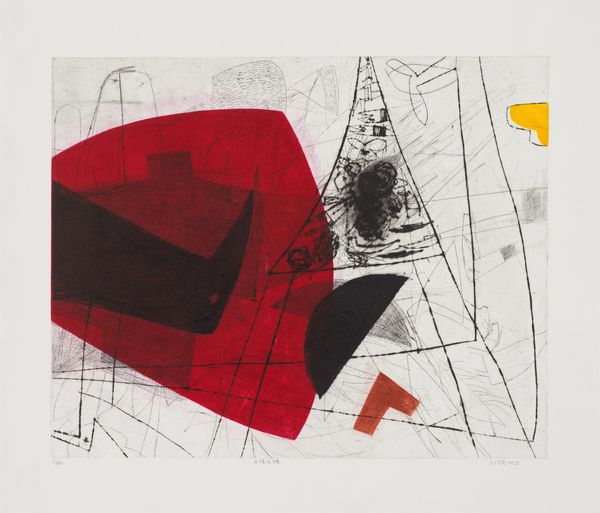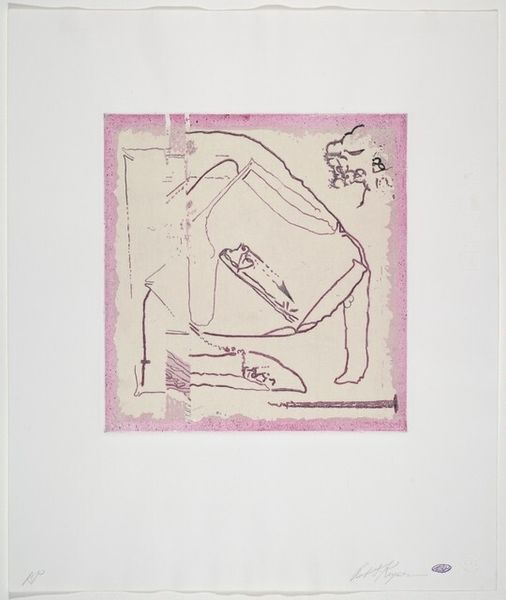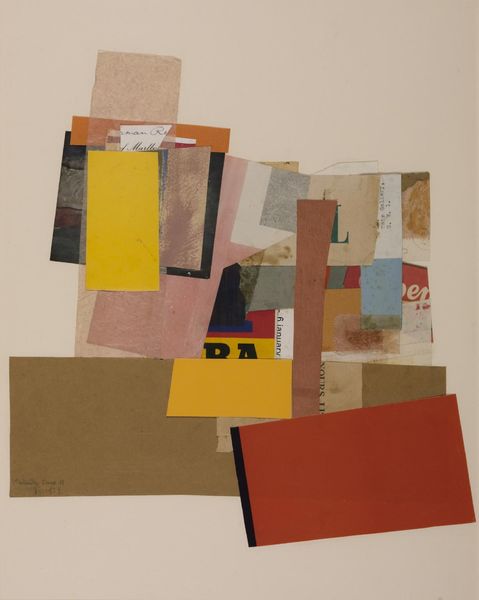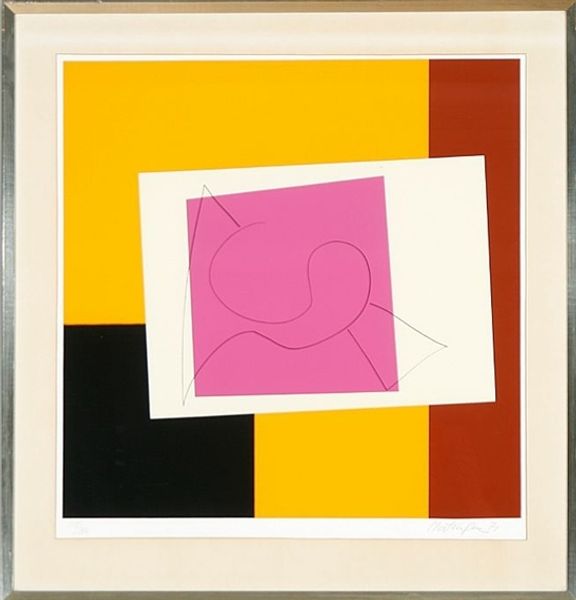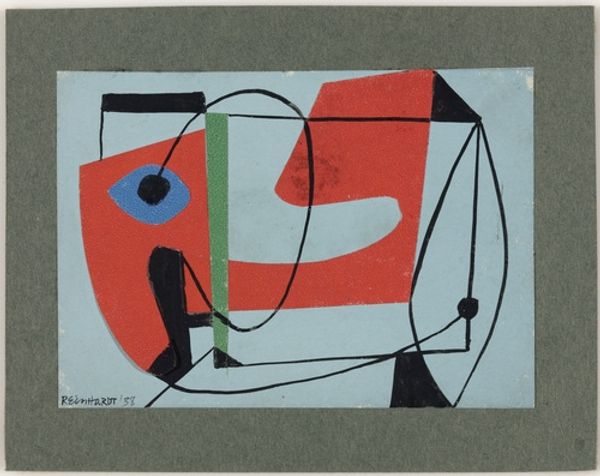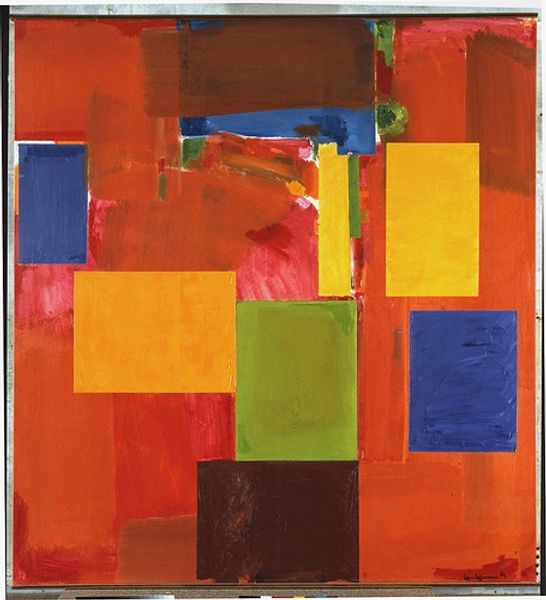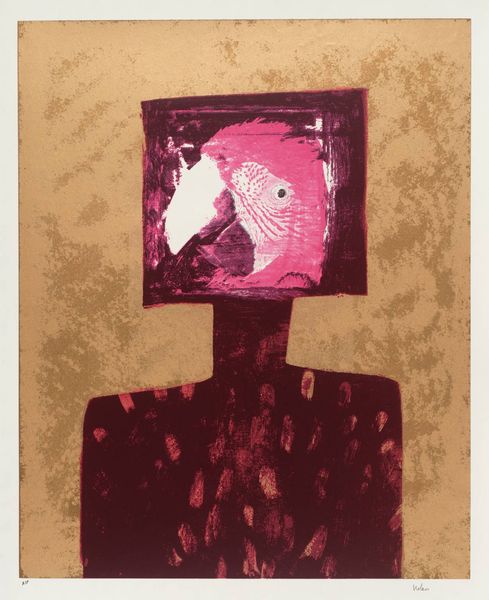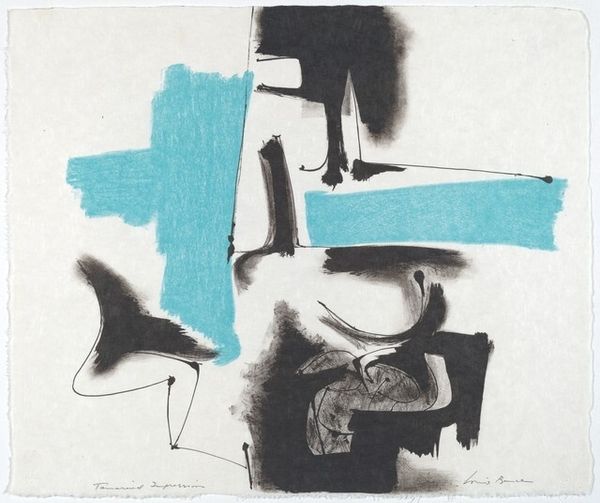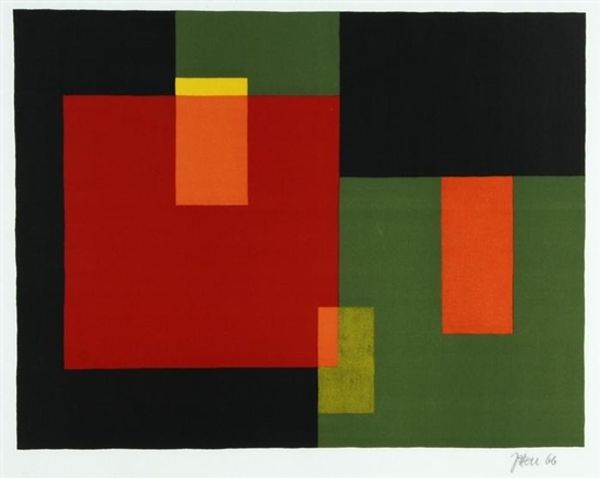
collage, print
#
negative space
#
collage
# print
#
pop art
#
linocut print
#
geometric
#
abstraction
#
pop-art
Dimensions: plate: 31.75 × 41.28 cm (12 1/2 × 16 1/4 in.) sheet: 49.85 × 59.69 cm (19 5/8 × 23 1/2 in.)
Copyright: National Gallery of Art: CC0 1.0
Editor: Here we have Karl Kasten's "In the First Place," a collage and print from 1969. It has an interesting tension; the composition feels very geometric, but the textures soften that rigidity. How do you interpret this work, considering its historical context? Curator: Considering the artwork's creation in 1969, we can explore its resonance within the socio-political landscape of the time. The abstract geometric forms might symbolize a deconstruction of traditional societal structures, a visual representation of the era's questioning of established norms. What role might the juxtaposition of the hard-edged shapes and the organic textures play in this conversation? Editor: That's a good point; the contrast does seem deliberate. It’s as if the artist is acknowledging the push and pull between order and chaos. What’s fascinating to me is that the Pop-Art elements seems at odds with the overall feeling of this linocut. It is not kitschy or mainstream. It’s almost subversive. Curator: Precisely. We can examine Kasten's piece through the lens of power dynamics, thinking about the linocut’s symbolic importance. Kasten might be subverting our expectations, critiquing the co-option of art for political ends and pushing us to reconsider what art can achieve as a tool of empowerment. Editor: I didn’t initially see it that way, but thinking about the era and the way abstraction can be a form of protest definitely changes my perspective. I appreciate how you situated this work within such a broader, yet very insightful, framework. Curator: Art serves as a visual dialogue that enables and enhances one’s view, not only for individual introspection but a communal call for intersectional cognizance and mobilization for those who would otherwise be voiceless. That dialogue continues today.
Comments
No comments
Be the first to comment and join the conversation on the ultimate creative platform.
